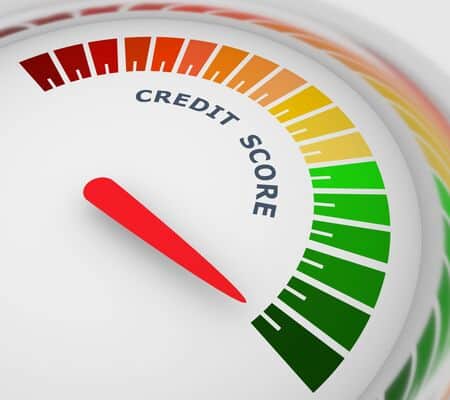
Your credit score is a very important number in your financial life, but it can also be a bit confusing. There are two scoring models that provide credit scores — VantageScore and FICO® Score — and your number might vary a bit between the two. And if you’re checking your score on different platforms (say on Credit Karma vs. your American Express app), you might wonder why the numbers are different.
While both scoring models are helpful for understanding the key factors impacting your credit, such as your payment history and your amounts owed, knowing your FICO Score over your VantageScore will likely give you a better idea of whether or not you’ll qualify for new credit.
That’s because FICO Scores are the most widely used scoring models — used by 90% of the top lenders in the U.S. In other words, when you go to apply for a new credit card or take out a loan, you can almost be sure that the card issuer or lender will look at your FICO Score to determine your creditworthiness.
Here’s how to check your FICO Score for free
Checking your credit score is free and easy to do. And doing so won’t lower your score, though that’s a common myth.
The easiest way you can access your free credit score is through your credit card issuer. Many banks and issuers offer cardholders free access to their FICO Score, including the companies listed below:
- American Express credit cards
- Bank of America credit cards
- Citi credit cards
- Discover credit cards, through Discover Credit Scorecard
- Wells Fargo credit cards
Not a credit cardholder of any of the above? No sweat. There are also free resources that anyone can use to check their FICO Score:
- Experian Boost™ (available to everyone)
- Discover Credit Scorecard (available to everyone)
How often should you check your credit score?
You should check your score least once a month. Your credit score changes when information on your credit report gets updated, which can vary from person to person. Generally, however, you can expect a score update at least once a month and even more often if you have multiple credit products in your name. One way to be proactive about changes in your credit score is to sign up for a credit monitoring service that will alert you in real time if there is any unusual activity with your credit.
Here are the 5 FICO Score ranges
When checking your FICO Score, it’s important to know where you fall within the different scoring ranges.
Essentially, it’s better to score higher. Those in the “good” to “exceptional” ranges typically have better approval odds, as well as get offered the lowest interest rates. The less you have to pay in interest, the more money back in your wallet.
Below are the five FICO Score ranges, according to the FICO website:
- Poor: 300 to 579
- Fair: 580 to 669
- Good: 670 to 739
- Very good: 740 to 799
- Exceptional: 800 to 850
How FICO credit monitoring can help your score
FICO has over a dozen credit score versions. For example, FICO Score 8 is the most widely used version by lenders and is typically the best one to check to get an overall idea of where you stand. However, when it comes to taking out a loan for a new home, you’ll want to check your FICO Scores 2, 4 and 5 since those are the versions used in mortgage lending.
With all the different versions to keep track of, you might want to consider signing up for FICO’s credit monitoring service so you can get access to 28 different versions of your FICO Score. This will allow you to know the most accurate credit score whatever you’re applying for, whether it’s a credit card or an auto loan.
The three credit monitoring programs that FICO offers are Basic, Advanced and Premier. These services range in cost from $19.95 to $39.95 per month. Each plan offers different features depending on the tier you sign up for, including triple-bureau protection, monthly credit report updates, dark web scanning of your personal information and identity theft insurance so you’re financially covered from any data breaches, fraud or theft (up to $1 million).
Read Select’s full comparison of each FICO plan, and what they each have to offer, so you can decide what amount of coverage is best for you.